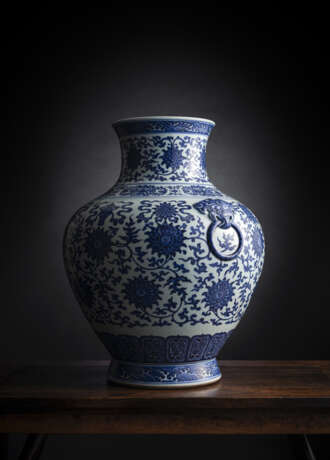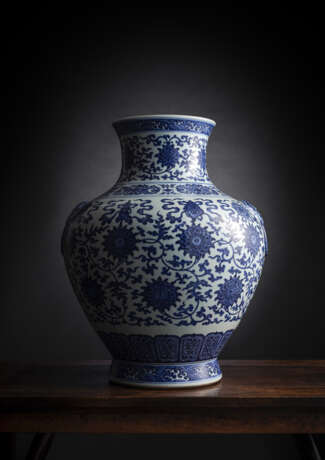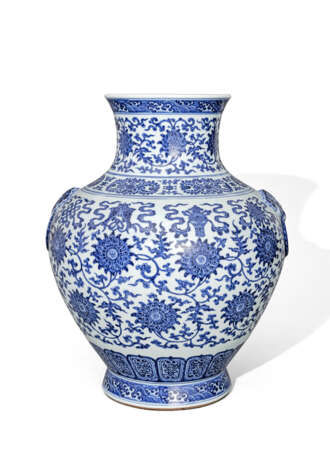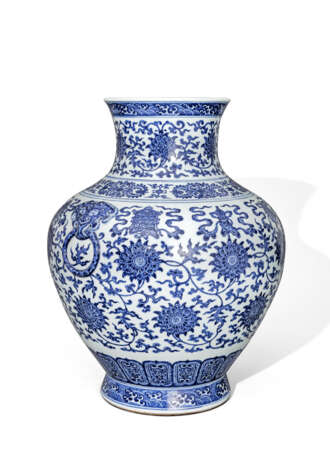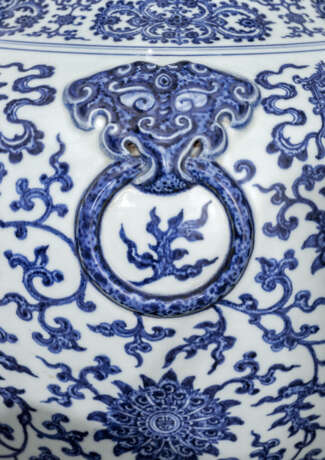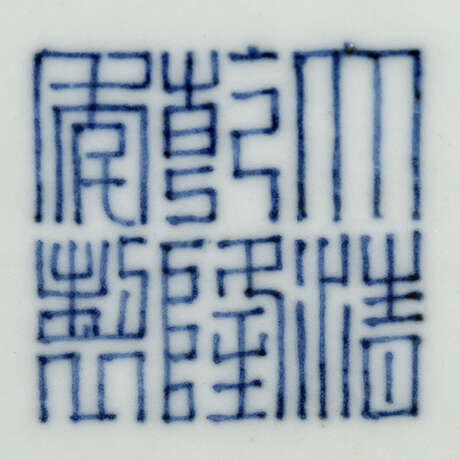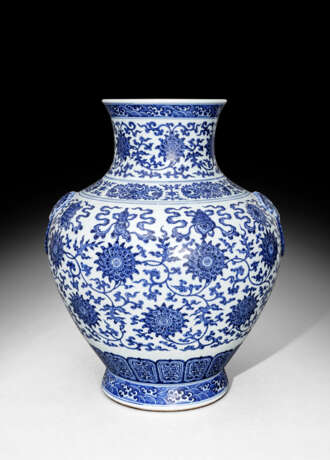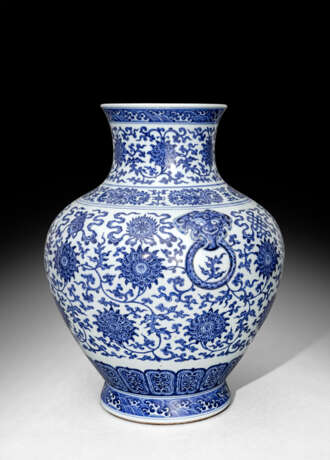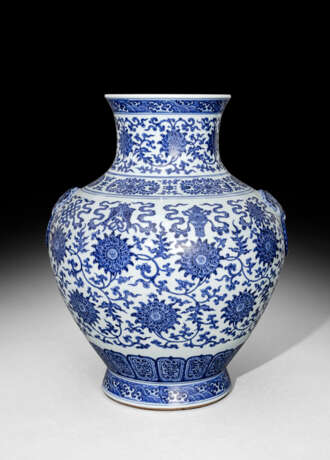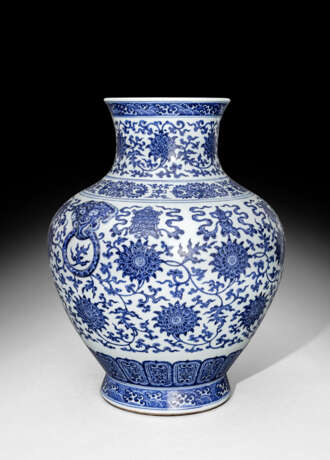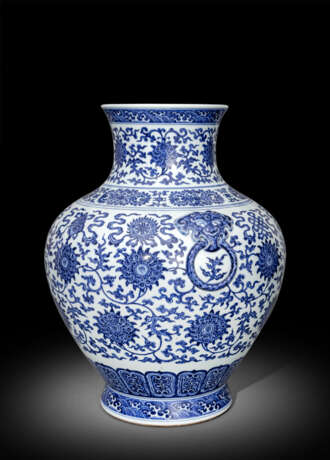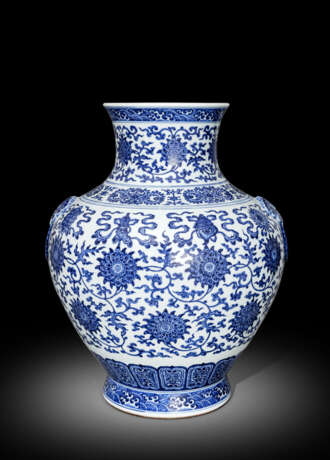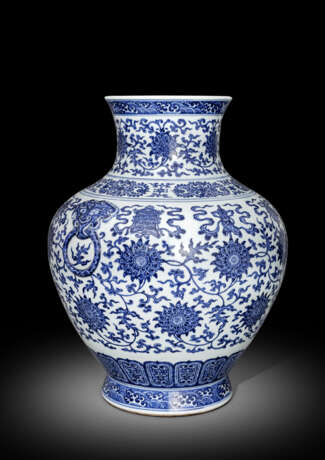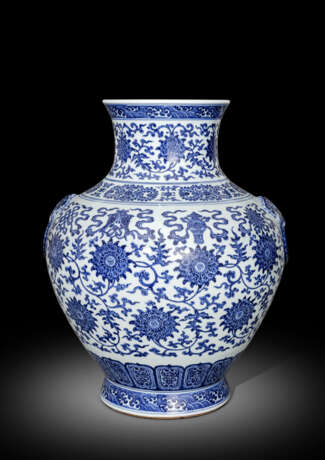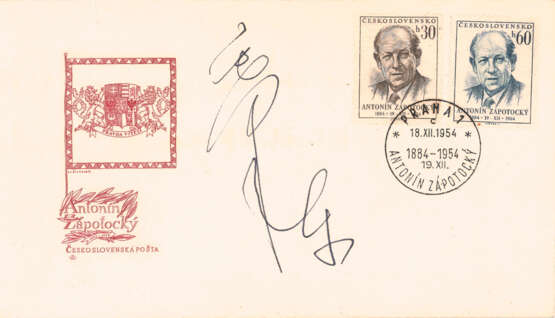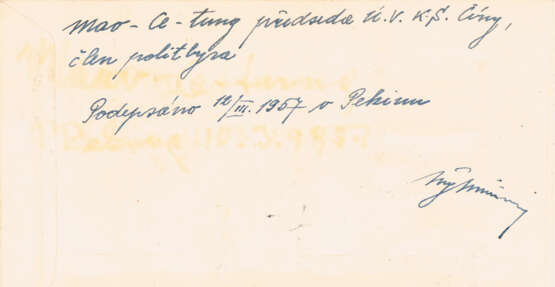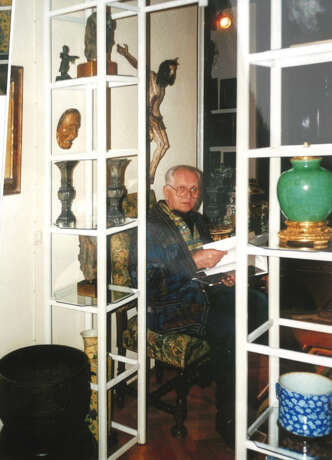ID 972587
Lot 328 | Feine kaiserliche Vase in 'Hu'-Form
Estimate value
€ 200 000 – 300 000
H. 48,5 cm
Der robuste, eiförmige Körper, der auf einem gespreizten Fuß ruht, schwingt sich zu einem taillierten Hals und einem umgedrehten Rand auf, der mit zwei Taotie-Masken-Henkeln besetzt ist, an denen Scheinringe aufgehängt sind, hell bemalt in tiefen Kobalttönen, akzentuiert durch den 'heaped- and piled'-Effekt, mit einem breiten Band aus verschlungenen Lotusblüten, wobei die großen Blüten in einem abwechselnden Doppelregister getragen werden, wobei die obere Reihe jeweils eine der Bajixiang mit Bändern trägt. Der Hals ist von einem Band aus vierblättrigen zackigen Motiven umgeben, die durch Blumenzweige geteilt und von einer Lotosrolle umwickelt sind, der Sockel ist mit Blütenblättern eingefasst, alles zwischen einem Band aus stürmischen Wellen, das den Rand und den Fuß umgibt, der Sockel ist in Unterglasurblau mit einer Sechs-Zeichen-Siegelmarke beschriftet.
| Address of auction |
Nagel Auktionen GmbH Neckarstrasse 189 - 191 70190 Stuttgart Germany | ||||||||||||||
|---|---|---|---|---|---|---|---|---|---|---|---|---|---|---|---|
| Preview |
| ||||||||||||||
| Phone | +49 (0)711 649 690 | ||||||||||||||
| Fax | +49 (0)711 649 69696 | ||||||||||||||
| Buyer Premium | 29,5% | ||||||||||||||
| Conditions of purchase | Conditions of purchase | ||||||||||||||
| Business hours | Business hours
|
